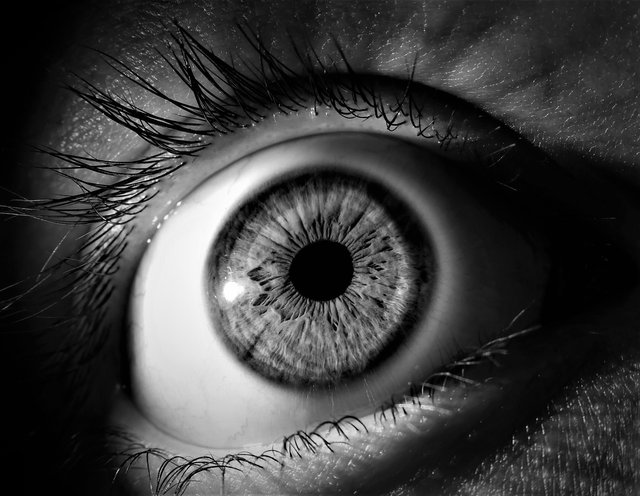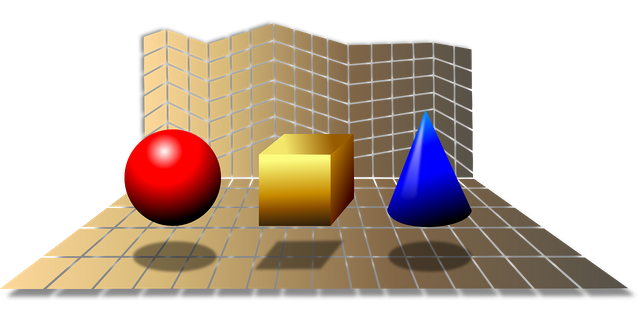The 'Molyneux Problem' Problem
Introduction
Hey! I'm sure you are thirsty for some interesting topic that I am going to share today. Grab a snack and take time to read and learn, and have fun!
First of all, I want to give special thanks and appreciation to @mobbs who helped me with this post. I haven't posted in a while because I was thinking of some interesting topics I should post about but there's just no thought comes to my mind. To talk with @mobbs gave me energy to create some good topic for the readers to enjoy with his help.
The Molyneux Problem

If a person blind from birth were suddenly able to see, would she be able to recognize by sight alone the shape of an object she previously knew only by touch? Presented with a cube and a globe, could she tell which was which?
A great question that has been studied for over 300 years by scientists and philosophers.
Well known names such as Locke, Voltaire, Leibniz and of course, Molyneux, have all tackled with this problem over the centuries. In fact, it was Molyneux who first asked Locke, to which Locke wrote an essay on the matter and came to the decision 'no'.
The overall idea of the essay is that the sense of touch and sight are so fundamentally different that there would be no part of the brain that has them connect naturally; only by association over experience, as with a baby, do these senses come together.
Well, in 2011, researchers finally did experiments to answer this once and for all - or so they claim. From Rural Northern India, four boys and a girl ages 8-17, all of which had been blind since birth, one with a disorder of the cornea and others have cataracts.

They all have tested the children within 48hrs of their operations. They placed 20 small objects on the table which is similar to Lego blocks where they could be seen but not touched. They had the children touch the other identical blocks object under the table where they couldn't see it and tried to match them to those they could see.
The average performance of either touch or sight alone was very high, close to perfect. But, on the other hand, their performance of matching the objects they have touched to objects they've seen dropped very low, no better than chance.
Yet, according to a co-author of the study, Yuri Ostrovsky, a postdoctoral fellow at M.I.T, said that improvement was rapid and one child was proficient in less than a week. Apparently, within three months, the average numbers of correct answers in matching objects they've seen with only one touch was over 80%.
Based on the studies of the researchers, blind people who got the chance to see for the first time can't tell which was which by matching objects they have felt to objects they have seen after the operation but they could quickly learn.
This seems to match with the conclusion that has been around forever. But there are still problems that make this idea still a little uncertain.
This study in particular was a small one, and few repeat studies have happened since - a vital aspect of science that makes these conclusions more reliable.
But the method was also a little unfair. The 'point of view' of touch is very 3-D. Holding a block gives you an idea of the width, height and length of the object. So it's not surprising when the subjects were sat down directly in front of an object, only viewing a single flat side, that they couldn't associate it with what they had touched.
People with sight can assume a pyramid shape is a pyramid all the way around based on experience and assumptions, something that blind people never had the chance to learn. So it's also unfair that 3D images were used instead of 2D.


The same problem was found in an earlier study from 2009, and amazingly, they found that these subjects would point to various colours and shades of brightness as if they were individual objects!
However, this study also pointed out that the subjects had a much greater success when the objects were moving, which makes sense because this provides a greater amount of information to work with. They could now much more easily 'link together' different segments of the shapes, and understand that what's going on in the background is different.
So given that the studies available so far are so varied and incomplete, we still can't actually answer this question 'once and for all', the mystery remains!
What I think about it?
This is just my opinion.
First of all, I am very grateful and thankful that god gave me this wonderful gift to be able to see. And I really feel sad about the people who can't. I actually know some blind people in my hometown and I am very surprised and amazed how they could cross the street with full of vehicles. Same as the objects they touch/hold, they know what it is because they have really tried to learn to have a normal lifestyle like the people who have sight.
My answer to the question "If a blind person were suddenly able to see, would he be able to recognize by sight the shape of an object he previously knew only by touch?" is probably YES.
It seems intuitive to me that they could recognize flat and curved objects by sight if they think logically! I think the problem of the people who can't define which is which could have been affected by the formal lab environment they were in which could have affected their logic, willingness and self-confidence.
The only way possible that I can see that these studies could be totally accurate would be if the objects were painted Vanta Black or Black 2.0 so that no depth, edges, or corners could be observed from sight, lowering chances of unfair confusion. And of course, many more studies need to be done for a truly valuable conclusion.
And this brings me to a more important point than the Molyneux problem itself:
We should realize that being blind does not mean you are handicapped in any other way, and a blind person can surely overcome these obstacles!
What do you think?
I'm inviting everyone to feel free to comment below and tell me what's your opinion about this and let me know Why; the science, the philosophy, anything. Because I would love to hear what do you think and learn something from you.
References:
philosophyofbrains.com
Nature.com
Projectprakesh
sagepub.com
This is a difficult question to answer because no one here (I think) has ever been blind, so seeing for the first time is not an experience we can remember, we don't know what a person can feel when seeing for the first time.
I thought the same, as time pass people start to get use to the new sense and their skills improve.
My answer is that it would depend on the complexity of the object. So a ball for example would be easy to recognize.
Yeah makes sense. Thanks for your time to read :)
I'm not a scientist or philosopher, but here goes...
It depends on how to define 'sight' and 'seeing'. The human body is born with eyes, and the human brain is hard-wired to learn how to interpret the signals coming in through the eyes. It's a bit like the hard-wired ability to learn how to speak.
Light coming through the eyes is just an electro-magnetic stimulus. It is not 'seeing' or 'sight' until the brain interprets the signal, organizes it, and gives it a category or meeaning.
For someone who couldn't see, but then could, all other things being normal, it's just a matter of the brain learning to organize the light signals. Of course, if the person matured with no light signals coming in, it is very likely that their brain missed out on some aspects of 'seeing'development because of lack of input. Hope some of this makes sense haha! Cheers, interesting post.